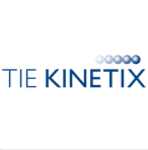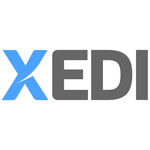What Is EDI - Electronic Data Interchange Software?
Businesses can electronically exchange documents and data with their trading partners thanks to a technology called Electronic Data Interchange (EDI) software. It enables businesses to link their internal systems to those of their clients, vendors, and other business associates, enabling the smooth and automated exchange of data.
The way EDI software functions is by converting data from an organization's internal format into a common electronic format that all stakeholders can comprehend. This reduces the possibility of errors during manual data processing and does away with the requirement for manual data entering. By lowering the time and expense involved with conventional paper-based procedures, EDI software provides a safe and effective means of data interchange.
Additionally, it makes real-time tracking and transaction status visibility possible, giving businesses useful information and insights to help them make better decisions. EDI software comes in a variety of forms, such as cloud-based, hybrid, and on-premise options. Businesses must think about their industry, trading partner requirements, scalability, and integration capabilities when selecting an EDI software.
Implementing EDI software has several advantages, such as lower operating expenses, increased data accuracy, better customer/vendor connections, and increased efficiency. In today's technologically advanced business environment, it is a vital tool for companies to maintain their competitiveness.
What Are The Recent Trends In EDI - Electronic Data Interchange Software?
The necessity for simplified, effective communication between trading partners and the ever-evolving business landscape have led to a rapid evolution in EDI (Electronic Data Interchange) software in recent years. There are certain significant developments in EDI software that consumers should be aware of while making their selections, as technology develops and companies require greater automation and integration.
1. Cloud-Based Solutions: The move to cloud-based solutions is one of the most significant developments in EDI software. This indicates that consumers can access the software via a web browser and that it is hosted and maintained by a third-party provider. Numerous advantages result from this, such as lower infrastructure costs, simpler scalability, and improved accessibility for international and distant teams. It's hardly surprising that EDI is following the increasing number of companies who are using cloud-based solutions for their software requirements.
2. Improved Integration Capabilities: The use of EDI software has expanded beyond document exchange between trading partners. Enterprise Resource Planning (ERP) software, supply chain management, warehouse management, and other business systems are now interacting with EDI systems. From order to delivery, the entire supply chain process is streamlined and data may flow freely as a result. An increasingly important part of the entire system landscape of enterprises is EDI software.
3. Mobile Optimization: Having on-the-go access to critical information is essential in the fast-paced business world of today. In order to enable users to access and manage their electronic transactions at any time and from any location, numerous EDI software suppliers are now providing mobile-optimized versions of their platforms. Businesses with traveling or remote workers who need to maintain connectivity to their EDI systems will especially benefit from this.
4. AI And Machine Learning: The use of AI and machine learning technologies in EDI software is another noteworthy trend. These technologies can assist in removing errors from human data entry, automating repetitive processes, and seeing patterns and trends in data. EDI software is getting more accurate and efficient by utilizing these cutting-edge technologies, which eventually saves organizations money and time.
5. Stricter Security Measures: EDI software has traditionally placed a high premium on security because sensitive data is shared between business partners. Vendors of EDI software have improved their security procedures in response to the increase in cyber threats. This entails putting in place intrusion detection systems, multi-factor authentication, and strong encryption techniques. To safeguard their data, buyers should seek out EDI software with the best level of security.
Benefits Of Using EDI - Electronic Data Interchange Software
Electronic data interchange software, or EDI, is now a necessary tool for companies of all kinds and sectors. By removing the need for manual data entry and paper-based procedures, this software enables trading partners to exchange electronic documents in an efficient and secure manner. However, what particular advantages come with utilizing EDI software? Let's examine the main justifications for introducing EDI into your company.
1. Streamlined And Automated Procedures: The capacity of EDI software to automate and streamline a variety of corporate procedures is one of its main benefits. This increases efficiency and accuracy by significantly cutting down on the time and effort needed for manual data entry and processing.
2. Cost Savings: EDI software can assist companies in cutting operating expenses by automating procedures and minimizing the need for manual labor. Additional cost reductions result from the reduced usage of paper and other tangible resources.
3. Increased Data Accuracy: Because the data is input and transferred electronically, EDI significantly lowers the possibility of human error. This lowers the possibility of errors that can arise from human data entering and does away with the requirement for data re-keying.
4. Quicker Transaction Processing: Real-time data transmission made possible by EDI leads to quicker transaction processing and increased corporate agility. This might be especially helpful for companies that handle a lot of transactions.
5. Improved Cooperation And Communication: EDI software makes it easier for companies to collaborate and communicate effectively by allowing them to exchange data electronically with commercial partners. Partnerships and relationships with suppliers, consumers, and other stakeholders may be strengthened as a result.
6. Enhanced Data Security: To guarantee the secure transfer of private information, EDI software employs industry-standard encryption and security mechanisms. This lowers the possibility of data breaches and shields companies from possible harm to their finances and reputation.
7. Industry Standard Compliance: The majority of EDI software is made to adhere to industry-specific rules and guidelines, which helps companies better satisfy the needs of their trade partners. Partners' trust and relationships may be strengthened as a result.
Important Factors To Consider While Purchasing EDI - Electronic Data Interchange Software?
The unique requirements of your company and the possible advantages of integrating this technology should be taken into consideration when thinking about investing in Electronic Data Interchange (EDI) software. When weighing your options for EDI software, keep the following points in mind:
1. Integration With Existing Systems: EDI's capacity to automate and simplify data interchange across various systems and trading partners is one of its main advantages. Selecting software that can interoperable with your current systems—like Enterprise Resource Planning (ERP) software—without causing any problems or disruptions is essential.
2. Scalability And Ease Of Use: Your team should be able to establish and maintain trading partnerships with ease thanks to EDI software that is simple to use and intuitive. It should also be scalable so that it can accommodate future expansion and shifts in your company's requirements without necessitating major upgrades or revisions.
3. Security And Compliance: Since sensitive data is transferred during EDI, security protocols like user identification, secure network connections, and encryption are essential. Make sure the software you select complies with industry-standard security guidelines and laws, like GDPR and HIPAA.
4. Customer Service And Training: Purchasing EDI software also entails purchasing the assistance and instruction needed to use the system properly and efficiently. Seek out suppliers who provide thorough training and 24-hour customer service to handle any potential problems.
5. Cost And ROI: Carefully consider the software's cost, including any implementation, training, and maintenance fees, before making a purchase. Think about the possible return on investment (ROI) in terms of reduced expenses and time, enhanced productivity, and better data interchange accuracy.
6. Adaptability And customization: Every company has different demands, and the EDI software you select should be able to accommodate those needs. It should also be adaptable enough to quickly adjust to modifications in your trading partner requirements and business processes.
7. Performance And Uptime: To guarantee continuous business operations, your EDI software's dependability and performance are essential. To reduce downtime and prevent supply chain interruptions, look for software that offers great performance and a high percentage of uptime.
What Are The Key Features To Look For In EDI - Electronic Data Interchange Software?
For companies that need to securely and effectively share data with their trading partners, Electronic Data Interchange (EDI) software is an essential tool. However, customers may find it difficult to select the best EDI software choice due to the abundance of options available on the market. Here are the essential characteristics of EDI software to assist you make an informed choice.
1. EDI Protocol Support: Support for several EDI protocols is the first and most crucial characteristic to look for in EDI software. The rules and standards known as EDI protocols which include ANSI X12, TRADACOMS, and EDIFACT—define the format and transmission of electronic business documents. To guarantee smooth connection, make sure the EDI software you select supports the various protocols that your trading partners utilize.
2. Capabilities For Data Translation: EDI software should be able to convert your company's documents, including purchase orders, shipping manifests, and invoices, into a common EDI format and back again. This removes the need for manual data entry and boosts productivity by guaranteeing that your data is appropriately prepared and understood by all parties engaged in the transaction.
3. Integration Capabilities: Seek EDI software that can easily interface with the accounting, CRM, and ERP systems you currently use for your company. This will lower the possibility of mistakes and save time and money by enabling real-time data transmission and simplifying corporate procedures.
4. Data Visibility And Tracking: You can keep an eye on the progress of documents at all times with the help of a competent EDI software, which should offer real-time visibility and tracking of your EDI transactions. This guarantees that you can promptly resolve any issues that may come up and that you are always informed on the status of your transactions.
5. Security Features: When selecting EDI software, security should be the primary consideration because it entails the interchange of critical corporate data. To be sure that your data is shielded from unwanted access or manipulation, look for features like data encryption, secure file transfer protocols, and authentication.
6. Compliance With Industry Standards: Selecting EDI software that complies with the most recent industry standards is crucial given the dynamic nature of the corporate environment. This guarantees that your company complies with current requirements and steers clear of fines or transaction delays.
7. User-Friendly Interface: The effective adoption and use of EDI software depends on an interface that is easy to use. With features like drag-and-drop capability, dashboard customization, and user-friendly error handling, look for software with an intuitive and simple interface.
Why Do Businesses Need EDI - Electronic Data Interchange Software?
There are several reasons why businesses use EDI (Electronic Data Interchange) software, all of which can improve their overall performance and success. Important company documents like purchase orders and invoices can be shared between various computer systems thanks to EDI software. As a result, less time and money are spent on manual data input and paper documentation, enabling a more streamlined and effective procedure.
Enhancing the accuracy and speed of data interchange is one of the primary reasons companies require EDI software. Errors and delays resulting from manual data entry might eventually affect the business's productivity and efficiency. Data is electronically sent between systems using EDI software, which lowers the possibility of errors and guarantees prompt delivery.
Additionally, EDI software assists companies in adhering to industry norms and regulations. Sensitive information must be transmitted securely and consistently in a number of areas, including healthcare and banking. Businesses can achieve these standards by using EDI software, which offers a standardized and safe platform for data exchange.
Enhancing relationships and communication with suppliers and partners is another advantage of EDI software for businesses. Businesses may rapidly and efficiently communicate data with their trading partners with EDI, eliminating the need for emails, faxes, and phone calls. In addition to saving time, this enhances collaborations and communication.
EDI software can also assist companies in cutting expenses related to manual and paper-based procedures. Businesses can save money on printing and postal expenses as well as lower the possibility of mistakes and delays that could result in losses by doing away with paper records and human data entry. Maintaining competitiveness is essential in the fast-paced commercial world of today.
Businesses can gain a competitive edge by using EDI software to increase data exchange speed, accuracy, and efficiency. By offering a versatile and adaptable platform for data interchange, it also enables companies to adjust to shifting consumer expectations and market demands.
How Much Time Is Required To Implement EDI - Electronic Data Interchange Software?
The complexity of your business operations, the number of trading partners, and the degree of customization needed all affect how long it takes to adopt EDI (Electronic Data Interchange) software. The implementation procedure often takes a few weeks to many months to complete. Usually, there are multiple steps involved, such as training, testing, mapping, and planning.
You must evaluate your existing systems and procedures, ascertain the EDI needs of your trading partners, and establish the project's scope during the planning stage. It may take two to three weeks to finish this phase. Setting up the EDI software to satisfy the unique data formats and specifications of your trading partners is known as the mapping stage.
Depending on how complicated your company operations are, this phase may take four to six weeks. To make sure the EDI transactions are being sent and received correctly, you must carry out extensive testing after the mapping is finished. Depending on the volume of trading partners and the intricacy of the data being transferred, this phase may take two to four weeks.
Last but not least, training is necessary to guarantee that your staff is knowledgeable about the EDI software and equipped to manage any problems that may come up. Depending on the size of your team, training may take one to two weeks.
All things considered, the advantages of optimizing your data exchange procedures and raising the precision and efficiency of your business operations make the time commitment to deploy EDI software seem significant. For a deployment to go smoothly and successfully, constant collaboration with your EDI supplier is essential.
What Is The Level Of Customization Available In EDI - Electronic Data Interchange Software?
The degree of customization offered is a crucial consideration when looking for EDI software for your company. The technology known as Electronic Data Interchange, or EDI, makes it possible for corporate documents to be securely and effectively sent across various computer systems. The industry offers a wide range of EDI software, from straightforward off-the-shelf solutions to more intricate and adaptable choices.
The degree of customisation that EDI software offers is contingent upon the particular demands and specifications of your company. A certain amount of customisation is possible with most EDI software, including the ability to modify data mapping and translation to fit your systems and business processes. Businesses that interact with various partners or clients that might have varying EDI requirements should pay particular attention to this.
To guarantee the correctness and integrity of your company data, certain EDI software also gives you the ability to add custom fields or data validation criteria. Businesses in highly regulated industries or those with stringent data needs may find this to be very advantageous. Furthermore, some EDI software allows users to design their own workflows and business rules, which further automates and streamlines data interchange procedures. Businesses can increase the efficiency of their operations by saving time and money.
In general, the features and capabilities of EDI software determine the degree of customization that can be achieved. When evaluating various EDI solutions, it's critical to thoroughly analyze your company's goals and requirements in order to select a solution that provides the appropriate degree of customisation for your enterprise.
Which Industries Can Benefit The Most From EDI - Electronic Data Interchange Software?
Businesses across a range of industries have found that Electronic Data Interchange (EDI) software has revolutionized their data interchange procedures and increased productivity. EDI software enables trading partners to securely and instantly communicate business documents by taking the place of conventional paper-based techniques. Which sectors, then, stand to gain the most from EDI software? Let's examine.
1. Retail Industry: From purchase orders and invoices to shipping and inventory data, the retail sector manages a high volume of transactions. Retailers can improve supply chain management and lower the possibility of human mistake by automating these procedures with the use of EDI software. Additionally, it makes order processing quicker and more precise, guaranteeing that clients receive their purchases on time.
2. Healthcare Sector: Since the healthcare sector handles sensitive and important data, security and accuracy are of utmost importance. Healthcare providers and insurers may securely exchange patient data, insurance claims, and other medical records thanks to EDI software. This improves patient care, lowers administrative expenses, and expedites the billing process.
3. Manufacturing Sector: Meeting production deadlines and controlling inventory levels in the manufacturing sector depend heavily on speed and efficiency. Manufacturers may ensure timely delivery of materials and goods by automating data interchange with distributors, partners, and suppliers using EDI software. This helps prevent expensive delays and enables efficient supply chain management.
4. Transportation And Logistics Industry: In order to run efficiently, transportation and logistics businesses depend on prompt transmission of shipment data, invoicing, and tracking information. Real-time visibility of inventory and shipments is made possible by EDI software, which makes it easier for carriers, shippers, and suppliers to communicate this information electronically. This increases operational efficiency and cuts down on delays.
5. Banking And Financial Services: Every day, the banking and financial services sector handles a significant volume of sensitive data. Financial data may be transferred securely and easily between banks, credit card firms, and other financial organizations thanks to EDI software. This encourages quicker transaction processing, lowers error rates, and raises client satisfaction.
Conclusion
In conclusion, choosing the best EDI software for your company is an important choice that needs to be carefully thought out. It's critical to comprehend your company's needs and select a solution that can meet them. Investigating and contrasting various EDI software choices in-depth is crucial during the purchasing process. Look for capabilities that can be integrated with your existing systems and that meet your business needs.
Take into account the scalability and future expansion potential as well. The degree of assistance offered by the software vendor is another important factor to take into account. Seek out a respectable business with a trustworthy customer service department that can help you with any problems or questions that may come up. Evaluating the software's price as well as any extra costs or fees is crucial.
Even though it could be tempting to choose a less priced choice, remember that more expensive software might have greater features and support, which could ultimately save you time and money. Take advantage of the software provider's free trials or demos before deciding on a subscription. This will allow you to try the program and determine whether it is suitable for your business requirements.
In the end, the correct EDI software may increase productivity, improve communication with your trading partners, and optimize your business processes. You may grow your company by carefully weighing your options and choosing a dependable and appropriate solution.






















